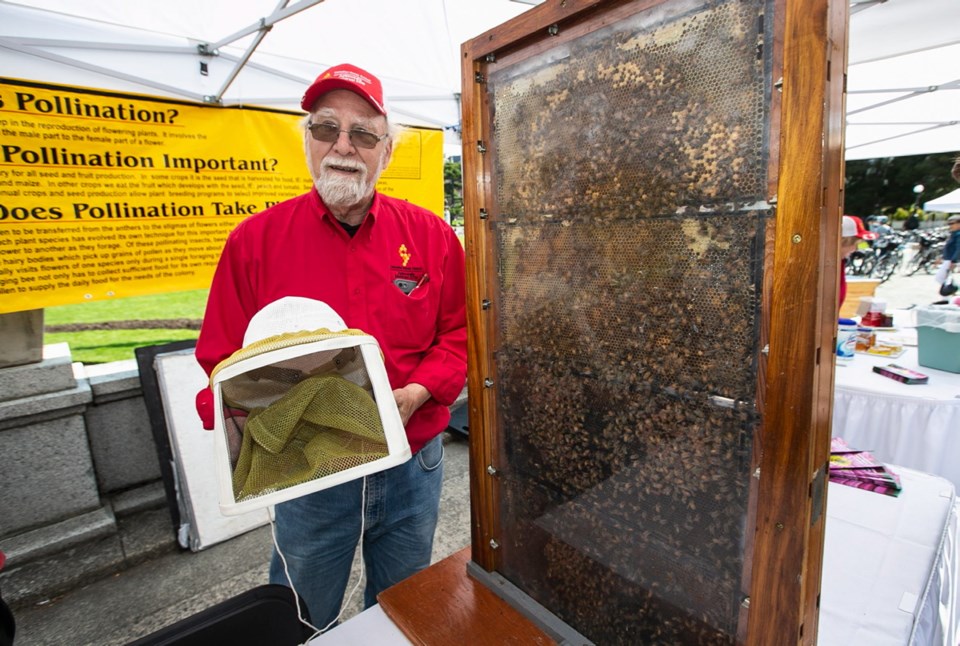I miss the birds and the bees. Also the caribou, the foxes and even the skunks. Can’t remember the last time anybody moaned about washing a skunk-sprayed dog with tomato juice, or picking porcupine quills out of its nose.
I just got back from Kamloops, where noticeable by its absence was the meadowlark that used to sing prettily from beyond my sister’s back fence. I don’t recall the last time I heard it — or many other birds, for that matter. Kids must look at taxi cabs and ask “what’s a bluebird?”
In 2018, the World Wildlife Fund issued a report showing global wildlife populations fell by a jaw-dropping 60 per cent between 1970 and 2014. That’s most of the Earth’s wild animals, gone, in the time since the Leafs last won the Stanley Cup.
The findings were echoed this month in a landmark report from the catchily named Intergovernmental Science-Policy Platform on Biodiversity and Ecosystem Services: “Nature is declining globally at rates unprecedented in human history — and the rate of species extinctions is accelerating, with grave impacts on people around the world now likely.”
The loss of biodiversity is particularly frightening. “Ecosystems, species, wild populations, local varieties and breeds of domesticated plants and animals are shrinking, deteriorating or vanishing,” German professor Josef Settele, one of the international study’s authors, was quoted as saying. “The essential, interconnected web of life on Earth is getting smaller and increasingly frayed.”
Which brings us to the scene in front of the legislature Wednesday, when politicians, beekeepers and puzzled tourists gathered for The Day of the Honey Bee, which sounds like one of those drive-in movies that people used to pretend to watch before retiring to the back seat, but was in fact an effort to promote the province’s honey producers.
Agriculture Minister Lana Popham, wearing a bee-striped top, announced $300,000 in small-project research grants for those looking to improve bee health, which has been an unsettling problem for more than a decade. Across B.C., beekeepers have suffered devastating losses to wild weather, disease, wasps and other calamities. Here on the Island, honeybees have fallen prey to the parasitic Varroa mite.
At the same time, honey prices have slumped thanks to foreign honey fraud. Chilliwack’s Peter Awram, whose Worker Bee Honey Company is B.C.’s biggest apiary, estimates that up to 40 per cent of what is sold as honey around the world is adulterated with cheap substitutes such as corn syrup and rice syrup.
That makes it tough when B.C. farmers are competing with less-ethical producers for the U.S. market, Awram says. “Honey adulteration is out of control.”
Awram owns what is effectively an MRI machine that can detect adulteration. Popham talked of using such technology as part of a certification program that would allow B.C. beekeepers to celebrate the purity of their product.
The thing is, bees are about far more than honey. They are critical as pollinators of blueberries, raspberries, apples and other crops. No bees, no crops.
Victoria beekeeper Nairn Hollett worries what the demise of not only honeybees but mason bees, bumblebees, butterflies, moths, hummingbirds, flower beetles and other pollinators will mean to our interconnected world.
Here on Vancouver Island, native bees have been hit hard by habitat loss, she says. “We keep building out and out and destroying where they live.”
Likewise, immaculately manicured lawns and gardens leave nowhere for bees to settle down. “Leave a part of your garden untouched,” she urges. (Or emulate Popham, who has four “condos” for blue orchard mason bees at home.)
Pesticides, particularly the neonicotinoids in wide commercial use, take a toll. “They affect all insects, not just the insects farmers are trying to get rid of,” Hollett says.
It doesn’t help that agriculture economics encourage monoculture farming — big fields of a single crop. The bees whose hives are placed there don’t enjoy much diversity of diet. “If you fed your kids nothing but Timbits, they wouldn’t be healthy,” reasons Don Lambert, one of the more than 200 members of the Capital Region Beekeepers Association.
In fact, some crops do bees no good at all. Once hives have been taken out of blueberry fields, the Fraser Valley offers little for Awram’s colonies. Fields of corn and potatoes might appear pastoral from your passing car, but look like a desert to a bee.
It’s all about biodiversity. Everything is connected. Even us.



